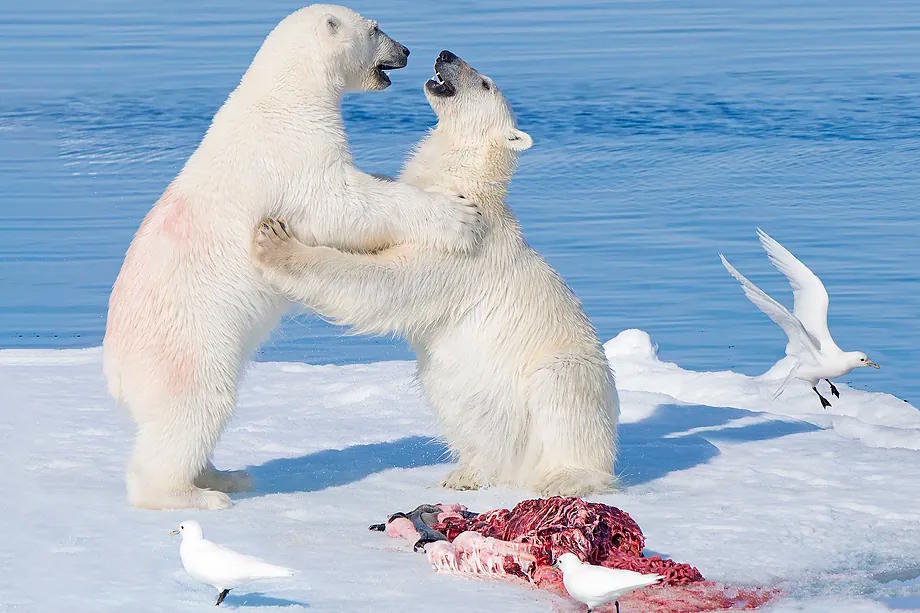There are between 22,000 and 26,000 polar bears in the world, distributed throughout the Arctic. Some subpopulations, especially those in the Beaufort Sea and western Hudson Bay, have shown declines of between 25% and 50% in recent decades. Polar bears depend on sea ice to hunt seals, their main food source, and the Arctic is warming at a rate 3 to 4 times faster than the global average. Their decline also threatens the survival of other species.
A new study just published in the scientific journal Oikos reveals for the first time the crucial role that polar bears play as scavengers for Arctic species. Researchers from the University of Manitoba and the Wildlife Conservation Society of the San Diego Zoo, along with researchers from Environment and Climate Change Canada and the University of Alberta, have estimated that polar bears leave behind approximately 7.6 million kilograms of meat from their prey's carcasses each year. A vital food source for a wide network of scavenger species.
The research demonstrates that these superpredators are a crucial link between marine and terrestrial ecosystems. By hunting seals on sea ice and leaving behind the remains, polar bears transfer a substantial amount of food from the ocean to the ice surface, making it accessible to other animals. The study identifies that at least eleven species of vertebrates benefit from this carrion, including Arctic foxes and ravens.
"Our findings quantify for the first time the magnitude of polar bears as food providers for other species and the interconnectedness of their ecosystem," says Holly Gamblin, lead author of the study and member of the Department of Biological Sciences at the University of Manitoba. "What emerges from this research is that no other species adequately replaces the polar bear's hunting method."
Previous research indicated that ongoing Arctic warming and the resulting loss of sea ice directly endangered polar bear populations, but it was not known that the loss of the carrion they provide could have significant consequences for the entire Arctic ecosystem.
"Our findings indicate that documented declines in polar bears in two subpopulations have already led to the loss of over 300 tons of food resources for scavengers annually," says Dr. Nicholas Pilfold from the San Diego Zoo Wildlife Alliance.
Studies by the U.S. Geological Survey and Nature Climate Change indicate that, if current emissions continue, more than 80% of populations will collapse before 2100. In the most pessimistic scenarios, with an increase of over 3°C, the polar bear could disappear from most of the Arctic by the end of the century. But now this research highlights the interdependence of Arctic wildlife species and their shared vulnerabilities to rapid environmental change. Thus, this research underscores the urgency of conservation efforts to protect them, not only for their own sake but also for the species that depend on them.
